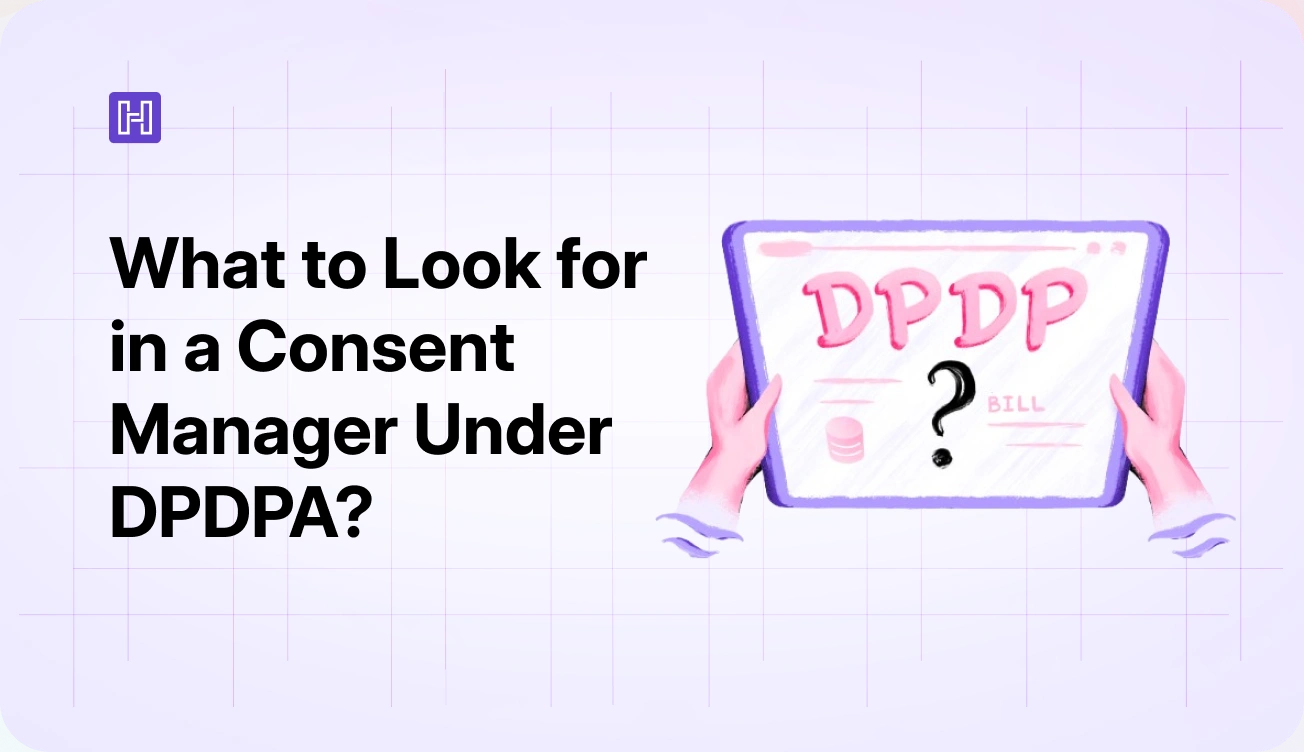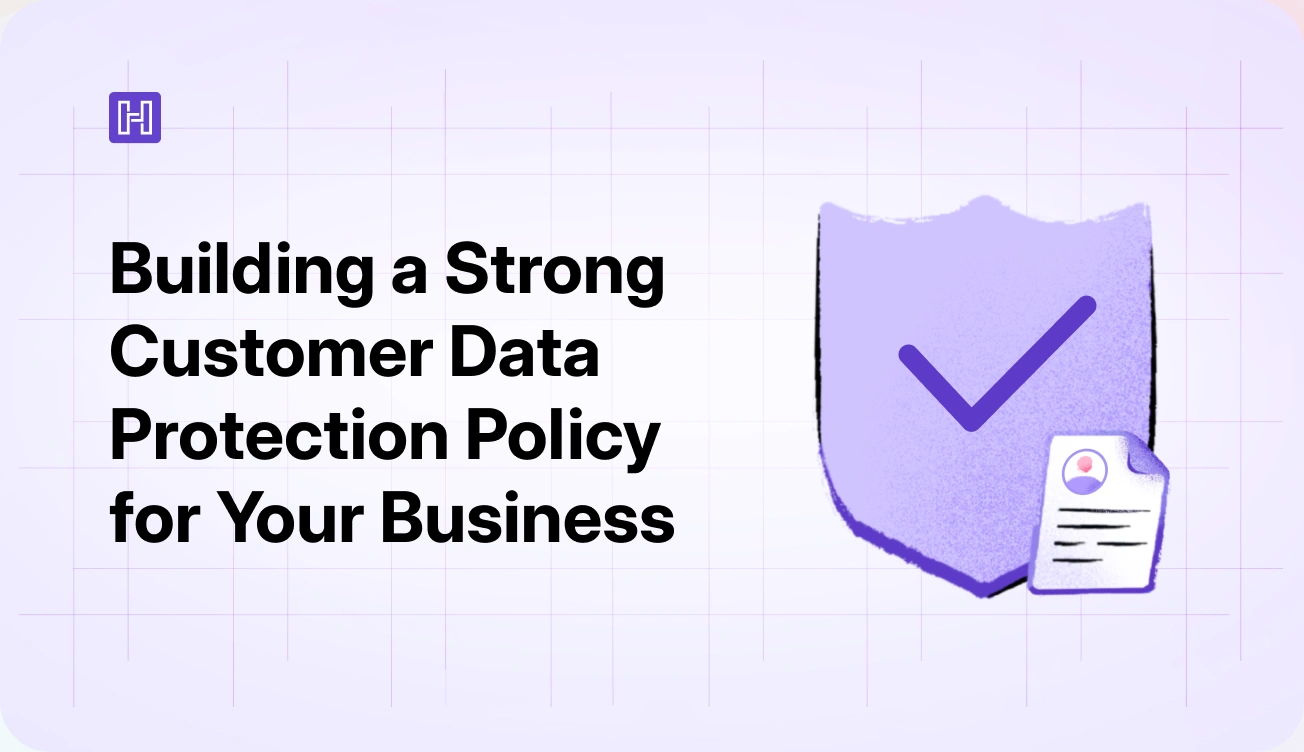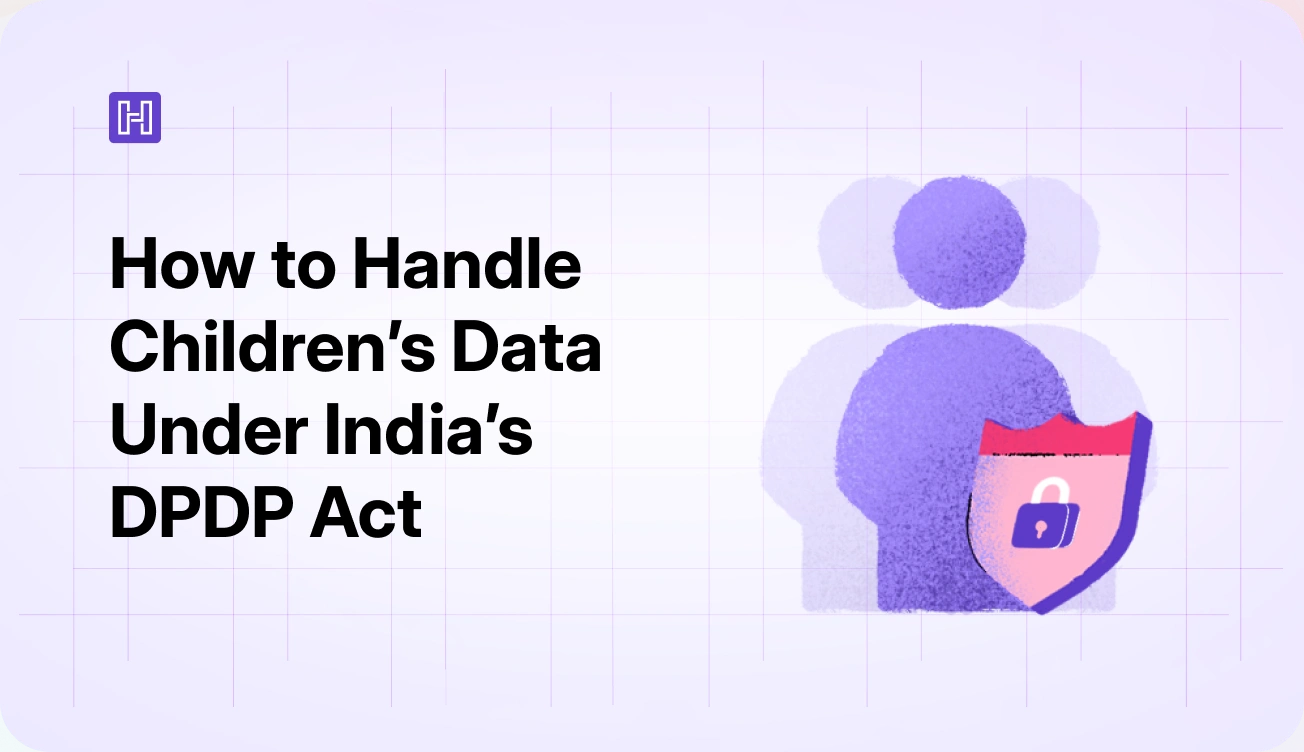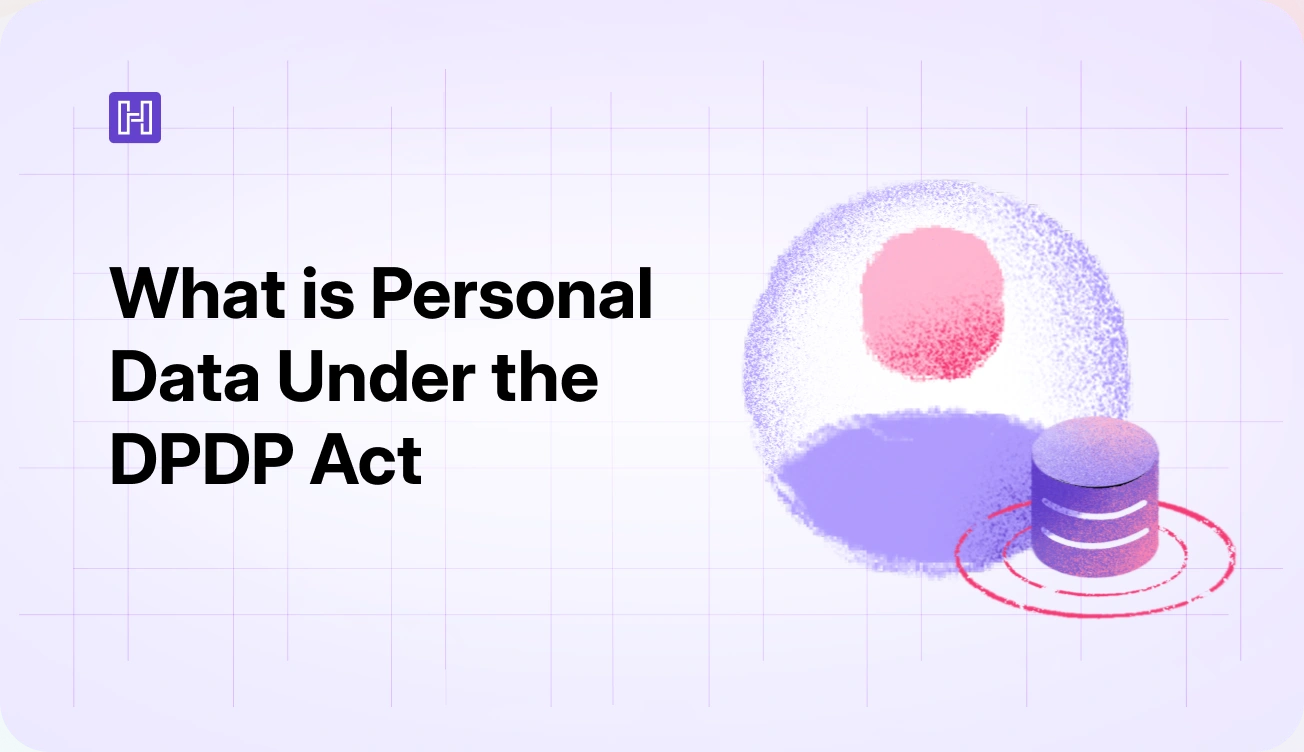Today, a single misstep in handling user consent could cost your business ₹250 crore. Sounds like a nightmare, right? Well, with India’s Digital Personal Data Protection Act (DPDPA), 2023 now in effect, this is the new reality for businesses. The DPDPA isn’t just another regulation—it’s a seismic shift in how personal data is managed, putting users firmly in the driver’s seat and demanding absolute transparency from organizations.
At the core of this transformation is the consent manager—a digital tool that’s quickly becoming the unsung hero of compliance. It’s not just a checkbox on a website anymore; it’s a powerful platform that lets users grant, review, or withdraw consent with ease. Think of it as a bridge between your business and your users, ensuring trust and compliance in every interaction.
Globally, consent management platforms (CMPs) have already proven their worth. But India’s DPDPA isn’t just following in their footsteps—it’s carving its own path. With a centralized approach overseen by the Data Protection Board of India (DPB), the DPDPA brings unique challenges and opportunities for businesses.
So, what does it take to choose the right consent manager under DPDPA? How do you ensure it meets both legal requirements and user expectations? And what pitfalls should you avoid along the way?
In this guide, we’ll break it all down for you. From understanding the DPDPA’s unique framework to comparing it with global standards, we’ll equip you with the knowledge to turn compliance into a competitive advantage.
What exactly is a consent manager?
Handling personal data comes with legal obligations, and businesses can’t afford to get it wrong. Consent managers act as the digital bridge between users and businesses, making sure data is collected, stored, and processed only with valid approval.
Without a structured system, managing user permissions can become a compliance nightmare.
As per Section 7(5) of the DPDPA, consent managers are specifically tasked with helping individuals give, track, and withdraw consent in a way that is clear and understandable. This legal framework requires businesses to comply with strict rules around obtaining consent and respecting user decisions regarding their personal data.
A consent manager does not strictly have to be an individual. It can be an entity that facilitates the process of giving and withdrawing consent while making sure all actions are recorded and can be audited. Here’s how they play an important role:
- They build user trust. Given that privacy concerns are at an all-time high, users feel more secure when they know they can easily control how their data is used. A well-designed consent manager provides transparency and control, and this can greatly increase user confidence in the business handling their data
- They maintain compliance with data privacy and data protection laws. Without a proper system in place, businesses risk violating data protection laws and facing severe penalties. Consent managers act as a safety net, verifying that companies remain in line with legal requirements such as those in the DPDPA, avoiding potential fines and reputational damage
- They help businesses avoid legal troubles. Consent managers reduce the risk of mishandling user consent, which could lead to costly investigations, lawsuits, or compliance audits. By clearly documenting and managing consent, businesses can ensure they are always in a strong legal position, avoiding disruptions and complications in their operations
What do consent managers actually do?
Consent Managers simplify what would otherwise be a complex, error-prone process. They create a structured, automated system that businesses can rely on to manage user permissions without legal uncertainty.
Here’s how they help:
Simplify opt-ins & opt-outs
Consent managers make it easy for users to opt in or opt out of sharing their data. They allow businesses to clearly ask for permission to collect or process data, and they give users control over that decision.
More importantly, this process is not complicated or time-consuming. With a click, users can accept or deny consent for data processing, and this can happen at any time, making consent flexible and user-friendly.
Provide a transparent dashboard for users
One of the most powerful features of consent managers is that they provide users with a dashboard where they can easily see how their data is being used.
Imagine being able to log into a platform and instantly check what businesses have access to your personal information, why they need it, and how it is being processed. This level of visibility makes users feel more secure because they’re not left in the dark about what happens to their personal data.
Plus, they can adjust their preferences at any time, giving them a sense of control and autonomy.
Confirm valid consent
Consent managers act as gatekeepers, allowing businesses to collect or process data only when valid consent is granted. They track consent, making it clear when, how, and for what purpose consent was given. This creates an unbroken audit trail of all consent activities.
Businesses cannot act on user data unless they have proof of explicit, informed, and legal consent, helping to avoid potential disputes.
Simplify compliance audits
For businesses, audits are one of the most time-consuming and stressful aspects of compliance. They’re often required to prove they’ve followed the proper steps in collecting and using personal data.
Consent managers make this process easier by creating a reliable record of all consent transactions. As a result, businesses can generate detailed audit reports, including all consent records and the necessary documentation to prove compliance.
The days of scrambling for missing consent forms or finding proof of user consent are over. Everything is stored securely and accessible for audits, making the process smoother.
Reduce the risk of penalties and legal action
A well-implemented consent management system helps businesses comply with data protection regulations and avoid severe consequences. Without proper consent management, companies could face hefty fines or even legal action for mishandling data.
Consent managers guarantee that businesses can show that they’ve followed the law, making it harder for them to fall into legal trouble. By tracking consent accurately and providing transparent records, businesses significantly reduce the risk of non-compliance penalties.
Stay compliant, stay secure.
Schedule a demo now and take control of your consent management!
Book a demo!DPDPA consent manager requirements for businesses: What to look for

Managing user consent is more about accountability than compliance. The DPDP rules indicate that companies must collect user consent and manage, track, and store it in a transparent, secure, and compliant manner.
A reliable consent manager will help businesses meet these legal requirements while building user trust. Having said that, here are some DPDPA consent manager requirements for businesses:
Compliance with DPDPA regulations
The Ministry of Electronics and Information Technology (MeitY) and the Data Protection Board of India (DPB) have laid out clear requirements for businesses handling personal data. A consent manager must map every user action to a legal framework and produce records that stand up to audits.
Here’s what you should look for:
- Legally valid consent collection: The system must capture explicit, informed, and voluntary consent—no pre-checked boxes, vague terms, or passive agreements
- Full revocation rights: Users must have unrestricted control to withdraw consent at any time, with an immediate effect on data usage
- Regulatory audit trails: Consent records should be structured, time-stamped, and tamper-proof to pass compliance checks without delays or gaps
User-friendly consent management
If users struggle to access or modify their consent preferences, the entire system fails. Businesses must offer frictionless interactions that let individuals control their data without jumping through legal hoops.
A clear and multilingual interface makes it accessible to a wide range of users. Look for a solution that provides a dedicated dashboard where users can review, modify, or revoke consent whenever they want. Transparent information about how, why, and where their data is being used builds trust and keeps users in control.
Security & data protection measures
Consent data is as sensitive as financial information. A weak security system puts businesses at risk of compliance violations, legal penalties, and reputation damage. A prime example is the €1.2 billion ($1.3 billion) fine imposed on Meta by the Data Protection Commission (DPC) of Ireland in May 2023 for a significant data privacy violation. This serves as a stark reminder that security should never be an afterthought when handling consent data.
The best consent managers use layered protection mechanisms to prevent unauthorized access. Role-based access control (RBAC) allows you to manage who can alter consent records, reducing the risk of accidental or malicious changes.
For added security, choose a system that supports biometric authentication or multi-factor authentication (MFA). These measures limit access to authorized individuals only, improving both security and user trust.
Integration & interoperability
Your consent manager needs to fit seamlessly into your existing business ecosystem. That means it must be compatible with your CRM, business systems, and data processors.
Here’s why:
- API-first architecture: Businesses need developer-friendly APIs and SDKs to embed consent workflows into websites, mobile apps, and customer portals
- Automated consent tracking: Large enterprises process thousands of requests daily—automated logs prevent compliance errors and reduce manual effort
- Real-time data flow: Consent decisions should instantly reflect across all connected platforms, avoiding compliance gaps
Scalability & performance
As your business grows, so does the volume of consent requests you need to process. A robust consent manager should be able to handle high traffic without slowing down. It should work effortlessly across different devices, from desktops to mobile to cloud-based platforms.
Simultaneously, real-time consent processing is critical to avoid delays and compliance issues. Businesses need a solution that performs well under pressure and scales as needed, no matter the size of their operation.
Transparency & auditability
Regulators require undeniable proof that businesses are respecting user consent. A consent manager must generate compliance-ready reports with full traceability of every consent action.
Here’s how a consent manager can do that:
- Immutable logs: Consent history should be cryptographically secured so no one can alter past records
- Automated compliance reports: Businesses should have pre-built reports that can be shared with auditors in a few clicks
- Data residency controls: The DPDPA mandates that personal data be stored in India unless specific exemptions apply. A consent manager must enforce location-based storage policies to prevent cross-border compliance issues
Cost & business suitability
Cost is always a consideration when choosing a consent management solution. Ideally, a consent manager should offer flexible pricing plans based on the size of your business and the volume of transactions you handle.
Customization options are also crucial. Every business has unique needs, and a single solution won’t cut it. Additionally, look for a system that keeps up with regulatory changes. The DPDPA regulations will evolve over time, so your consent manager should provide regular updates to keep you compliant with the latest rules.
The real-world challenges of consent management
You might be thinking collecting consent is simple. Users opt-in, businesses collect data, and everyone moves forward. In reality, it’s far more complicated.
Laws change, platforms evolve, and user expectations shift. Businesses must navigate compliance without making consent a frustrating experience.
Key challenges businesses face
A consent manager must do more than capture approvals—it needs to work across systems, scale effortlessly, and handle legal differences. If any part of this fails, companies face compliance risks, operational chaos, and damaged trust.
Here are some of the challenges businesses face when managing consent:
User friction: How to keep It seamless yet compliant?
People don’t want to spend time adjusting privacy settings. If the process takes too long or feels intrusive, users abandon sign-ups or ignore consent banners.
On the other hand, businesses can’t afford vague policies or unchecked permissions. A system that’s too restrictive limits engagement. Similarly, a system that’s too open exposes companies to non-compliance and legal penalties.
Hence, businesses must figure out how to capture consent transparently and ensure they aren’t bombarding users with endless forms. If not done right, it could affect user engagement or even trust, making it a delicate issue for data controllers.
Scalability: Managing consent for thousands (or millions) of users isn’t easy
As your user base grows, so does the challenge of maintaining accurate, compliant consent records. When dealing with thousands—or even millions—of users, tracking, updating, and revoking consent can quickly become overwhelming.
Manual systems can’t keep up with the demands of such scale. A reliable consent manager must store millions of consent actions in real time. If records fail to sync across departments, businesses risk collecting or using data without proper authorization, which leads to penalties.
For data fiduciaries, this means handling large volumes of data and maintaining compliance across multiple touchpoints, jurisdictions, and platforms. The complexity increases when managing consent across different systems. Data processors, in particular, must ensure that consent records are synchronized correctly, without duplication or data loss, while also also managing regional compliance differences in different jurisdictions.
Interoperability: Ensuring your consent manager works across different platforms
Today, businesses rely on a mix of platforms to reach their customers. From mobile apps to websites and third-party platforms, each touchpoint needs to support the consent management system.
For example, consider a business that operates both a website and a mobile app. If the user grants consent on the mobile app but the website fails to update those preferences in real time, there’s a high chance that user data may be collected without proper authorization.
Such discrepancies between platforms can lead to compliance violations and create significant audit headaches for businesses.
Handling minors’ data: Special rules apply—are you ready?
Privacy laws place stricter regulations on businesses collecting data from minors, and the consequences of non-compliance are severe. Under India’s DPDPA, COPPA (Children’s Online Privacy Protection Act in the U.S.), and GDPR-K (General Data Protection Regulation for Kids in the EU), companies must secure verifiable parental consent before collecting, processing, or storing a child’s data.
Unlike general consent mechanisms, where users simply accept terms and conditions, consent for minors requires additional layers of verification to confirm that a parent or guardian has approved the data collection. A simple “I am over 18” checkbox doesn’t meet legal standards.
Here’s how consent laws differ for minors:
- DPDPA: Explicitly bans behavioral tracking, targeted advertising, and data processing that could harm minors
- COPPA: Requires direct parental verification through government-issued IDs, credit card transactions, or signed consent forms
- GDPR-K: Sets age-specific thresholds, requiring parental approval for users under 13 to 16, depending on the country
In India, Rule 10, 11, and the Fourth Schedule introduce additional rules around children’s data and persons with disabilities. Data fiduciaries must obtain verifiable consent from a parent or guardian before processing such data, using appropriate verification measures. Data controllers must segment this information to comply with specific legal requirements. For children, organizations only need to confirm that the consenting parent is identifiable.
In contrast, for persons with disabilities, the guardian must be legally appointed. Certain sectors, like healthcare, education, and childcare, are exempt from some of these requirements when handling children’s data.
If a business fails to distinguish between adult and minor users, it risks regulatory action, heavy fines, and loss of public trust. Since laws governing children’s data differ across regions, businesses operating internationally must adapt their consent frameworks to meet the highest applicable standard to avoid legal conflicts.
How to implement a DPDPA-compliant consent management system
Building a DPDPA-compliant consent management system is more than just ticking boxes. It should protect your users’ privacy while keeping your business legally sound.
Here’s how to go about it:
Evaluate your current data collection process
Before you implement anything, you must first take a step back. Look at how you currently collect, store, and process data.
Are your consent processes clear and straightforward? Can users easily understand what they’re agreeing to?
Many businesses use generic consent banners, but DPDPA requires explicit, informed approval. If your system lacks transparency, it’s time for a change.
Choose the right consent manager
Not all consent management platforms meet legal requirements. A compliant solution must log consent actions, store records securely, and allow users to withdraw consent anytime.
In fact, the Liminal report projects the global market for privacy and consent management solutions to reach $5.4B by 2028, growing at 19.3% CAGR. Businesses that invest in the right tools now will be prepared for stricter regulations ahead.
Implement clear, user-friendly consent flows
Consent requests must be transparent and fair. Users should know what data is collected and how it’s used. No pre-checked boxes, vague language, or misleading tactics.
Users must have a clear choice—opt-in or opt-out—and should always know what they’re agreeing to. A consent flow should also allow users to easily withdraw consent at any time.
Secure consent records
Once consent is given, the real work begins. You need a system that tracks and securely stores every consent action. Compliance is about being able to prove you’ve received explicit, informed, and unambiguous consent.
Without proper documentation, even a well-intentioned process can fall short. Your consent manager should create tamper-proof logs and reports that are ready for audits or inspections so that you can always verify consent if needed.
Stay updated on regulatory changes
The regulatory landscape around data privacy is always evolving. The DPDPA is just the beginning. Agencies like DPIIT and MeitY are continually refining their guidelines.
Staying up-to-date with these changes will help you adjust your systems as needed. This proactive approach protects your business and strengthens your reputation as a responsible data fiduciary.
The future of consent management in India
As digital ecosystems expand, so does the need for more robust and transparent ways of handling consent. With the rise of artificial intelligence (AI) and automation, consent tracking will become faster and more efficient.
Businesses will move away from manual record-keeping and adopt automated, real-time tracking that flags inconsistencies and gaps. AI-powered systems will identify risks, manage consent withdrawals, and adjust policies as laws evolve. This shift will reduce compliance risks while strengthening data governance.
Looking ahead, it’s likely that India will adopt a GDPR-style enforcement mechanism, but it’s execution still remains uncertain. Will regulators introduce heavy fines and strict oversight like the EU, or will India adopt a business-friendly compliance model? As DPDP Act trends become clearer, companies will need to stay flexible and ready to adapt.
Transparency and trust will define the next phase of digital services. Users want control over their data, and businesses that provide clear, accessible consent options will stand out. Compliance will no longer be just about avoiding penalties. It will be a competitive edge that builds long-term loyalty.
HyperTrust offers a privacy-first consent management platform designed to keep businesses ahead of regulatory changes. It provides:
- A centralized dashboard for tracking consent actions and withdrawals
- Immutable logs to maintain audit readiness
- Multi-language support for accessibility
- Seamless integration with existing systems through well-documented APIs
- Real-time monitoring to detect unauthorized data usage
With built-in audit tools and purpose-based consent tracking, businesses can manage compliance without operational slowdowns. Book a demo now and see how HyperTrust can secure your DPDPA-compliant consent strategy!
Frequently asked questions
1. Do all businesses need a Consent Manager under DPDPA?
Yes, businesses that process personal data under India’s Digital Personal Data Protection Act (DPDPA) must implement a consent management system. This verifies that user consent is collected, tracked, and withdrawn in compliance with the legal framework.
2. What happens if a business fails to implement proper consent management?
Failing to implement proper consent management can lead to severe penalties and reputational damage. Businesses may face legal consequences for non-compliance, including fines of up to INR 250 crores or other enforcement actions under the DPDPA.
3. How do Consent Managers ensure user data remains secure?
Consent managers maintain data security by implementing encryption, access controls, and audit trails to protect consent records. They also use multi-factor authentication and security protocols to prevent unauthorized access and tampering.
4. What’s the difference between a Data Fiduciary and a Consent Manager?
A data fiduciary is an entity responsible for collecting and processing personal data in accordance with the DPDPA. A consent manager, on the other hand, is a tool or platform that helps businesses manage user consent, ensuring compliance with data protection laws by allowing users to easily give, track, and withdraw consent.





